The area surrounding Uyuni is probably the most visited part of Bolivia. It’s mainly due to the incredible beauty of the local countryside, which is so unique there is nothing even remotely similar anywhere else in the world. The main attraction is the vast Uyuni Salt Flats – Salar de Uyuni. Best choice for visiting this part of Bolivia are different tours. We also went on a three-day Uyuni Tour up to the border with Chile and saw not only the Salar de Uyuni.
Many tourists visit Bolivia only when travelling between Peru and Chile or Peru and Argentina. Their usual stops are often only Uyuni and La Paz. Still, Bolivia offers so much more – Best 8 Places to See in Bolivia. However, if you don’t have much time, you shouldn’t miss the Uyuni Salt Flats. Alternatively, take a 3-day Uyuni tour – just as we did.
What is Uyuni Salt Flats in Bolivia
Uyuni Salt Flats (Salar de Uyuni) is the largest salt plains in the world, located northwest of the city Uyuni. The plains are actually the bottom of a prehistoric ocean, but today it is located at an altitude of 3656 meters (11,995 ft.) above sea level – read our tips how to deal with High altitude sickness. Once a year during the rainy season this plain becomes an enormous and very shallow lake. Its surface then appears to be a huge mirror. It is quite an inhospitable place for the rest of the year though. During the day, you feel like you are in a desert without a single drop of fresh water and during the night the temperatures drop below zero, so everything freezes.
Uyuni Salt Flats in Bolivia are so vast that you can easily see them on satellite images as well. As the Salar de Uyuni sometimes turns into a lake, there are several islands, such as the Incahuasi Island. These islands are then surprisingly covered by thousands of cacti that thrive in these conditions.
Types of Uyuni Salt Flats tours and what will you see
You can visit Uyuni Salt Flats by yourself if you have a quality 4×4 car, or you can join one of the tours that are organised from Uyuni or La Paz. There are many agencies in Uyuni. Check our Tip How to Get from Peru to La Paz by Bus.
One-day tour from Uyuni
The basic one-day Uyuni tour takes you to the amazing train graveyard near Uyuni. The trains are abandoned and left behind to the mercy of elements. Next, you’ll set out to see Salar de Uyuni. Here, the guide will show you a museum, where you will learn all about salt mining, then you’ll drive to the salt hotel in the middle of the plain to have lunch and in the afternoon, you’ll set out to see the cacti island – Incahuasi Island.
Three-day tour from Uyuni
Another very common tour is for three days and two nights. That’s what we chose as well. The first day is the same as the one-day tour, but with the difference that at the end of the first day you are staying at a hotel instead of going back to Uyuni. The second and third day you will be able to admire the majestic Andes and you’ll see several gorgeous lagoons, which have different colours – green, white, blue or even red. Flocks of flamingos inhabit most lagoons, but you might also be able to see local foxes, wild lamas, and other mammals. We can’t forget to mention the spectacular geysers, deserts or beautiful rock formations.
The price and quality of the different tours usually depend on the quality of the accommodation. In most cases, the first night you’ll be sleeping in double rooms, but the second night may be very different. If the tour is cheap, you will sleep in rooms of six and you can forget about being able to take a shower. On the contrary, expensive tours will offer you double rooms with hot showers.
1st day of our Salar de Uyuni Tour
Since we didn’t pay for our tour in advance, our first day started quite hectically. We had places promised in one agency, but no one else came, so it wouldn’t be profitable for them to set out with just the two of us. Because of that, we once again had to run all over Uyuni looking for an agency with room for us two. We, therefore, recommend that you book your trip online in advance.
In the end, we managed to find places, but only with a Spanish guide. However, we were very lucky and our fellow travellers could speak both Spanish and English and translate for us. After we boarded an old Land Cruiser, the driver set out towards the train cemetery, which is located just outside of the city. It’s an incredible place with a strange atmosphere. The locomotives are aligned in rows behind each other and they are completely abandoned. Wagons are gradually falling to pieces due to weather conditions and vandals. We were able to climb through each train and take photos.
Then we set out towards the Uyuni Salt Flats. We made a stop at the local market and in the salt mining museum, and the mining is still running to this days. When we arrived to Uyuni Salt Flats, their white colour literally blinded us. The plains are so vast; there is no end or beginning in sight. One will only truly realize their size after spending some time just driving straight ahead without a single movement of the steering wheel and seeing nothing but white salt stretching in all directions.
After having lunch in the salt hotel, we went to Incahuasi Island, which is nicknamed the Cacti Island. But on the way there, one more stop was awaiting us. We all wanted to take photos that play with the perspective. Our driver/guide was very experienced and helped us take many great photos as well as a hilarious video.
When we reached the island, we were almost left speechless by the number of cacti that grew on the island. We took a short walk to its peak and realized that only from the higher ground we could really admire the enormous size of the Uyuni Salt Flats. The salty surface stretched almost everywhere the eye could see.
At that time, the sun began to set, and what awaited us was the drive to our hotel, where our dinner was waiting for us. The view of the last rays of sunlight reflecting from the salt crystals was absolutely unforgettable. But as soon as the sun disappeared behind the horizon, it got terribly cold.
2nd day of our Uyuni Tour
We spent the night at a pleasant hotel, built for tourists not far from the Uyuni Salt Flats, which was made of salt blocks. But the morning was very frosty and the old Land Cruiser didn’t provide very good conditions for warming up. However, the sun warmed up the land relatively quickly and so we welcomed every stop and the opportunity it provided to stretch our legs and admire the singular landscape of the Andes Mountains in Bolivia.
On the way, we stopped at the small desert of Chiguan, surrounded by many volcanoes, some of them reaching the height of 5840m – the Ollague volcano. Next, what awaited us were the lagoons (Cañapa, Hedionda, Chiarcota and Red Lagoon). All are part of the Eduardo Avaroa National Reserve National Park and are inhabited by three species of flamingos. Each of lagoons has a distinct colour, which is due to different chemicals or algae in the water. The Hedionda Lagoon strongly smells of sulfur and the Red Lagoon is bloody red because of the algae.
.
We couldn’t miss visiting the Desert of Siloli at 4550 meters (14,927 ft) above sea level (driest desert of the world and located at the highest point), which was surprisingly covered with snow. We also stopped by at the “Rock Tree”, which is a beautifully weathered rock in the shape of a tree. We finished the day with a dinner in our very simple accommodation, which had one incredible advantage – natural hot springs located only a few minutes away. It was a bit of a challenge to change into our swimsuits in the -10°C (14°F), but ultimately it was worth it. The night bath in the natural pool offered an incredible view of the starry sky. Watching the surrounding dark landscape with a clear view of the Milky Way was an unforgettable experience!
3rd day of our Uyuni Tour
The next morning, we went to see the 150-200°C (300-390°F) geysers and bubbling mud ponds, located at a height of more than 5000 meters (16,400 ft). Unfortunately, the road was closed due to fresh snowfalls. And so we went straight to the Dali Desert. Following were more lagoons – Green Lagoon at the foot of the stunning volcano Licancabur, located near the Chilean border.
From there we set out back to Uyuni. On the road, we made a couple of stops at other volcanoes, lagoons and also in the Valley of the Rocks. The spectacular rock formations were visible from afar and the walk among them was a very pleasant end to our three-day trip from Uyuni.
Liked this post? PIN IT FOR LATER!!
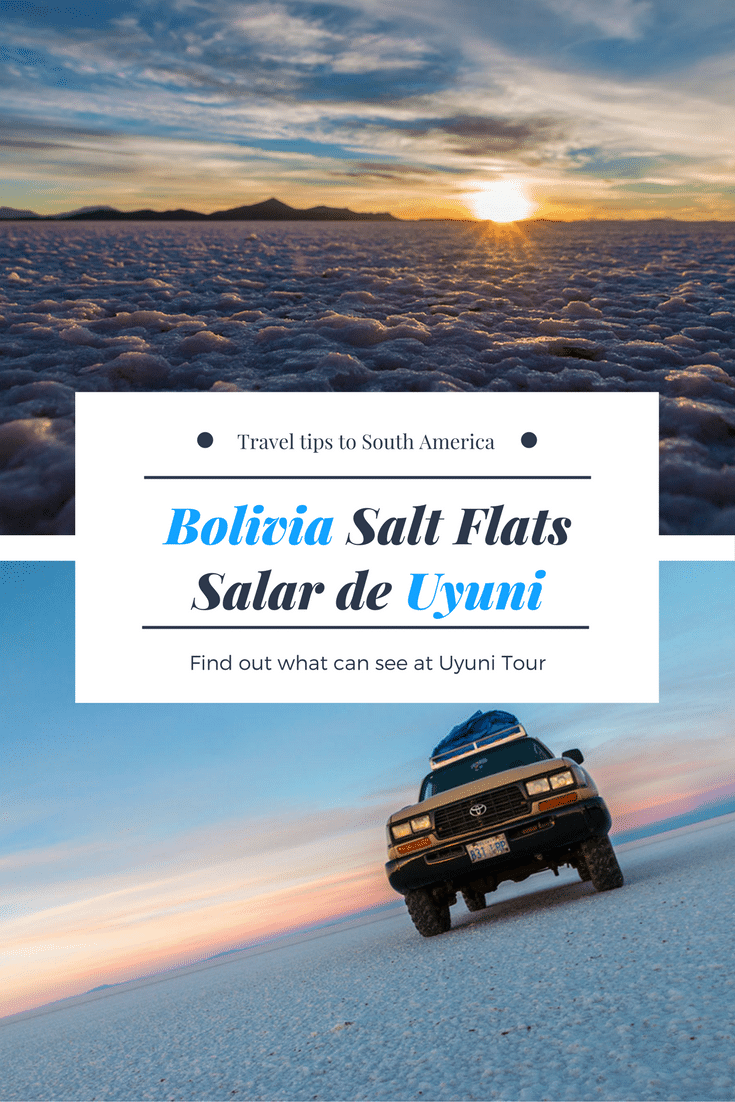

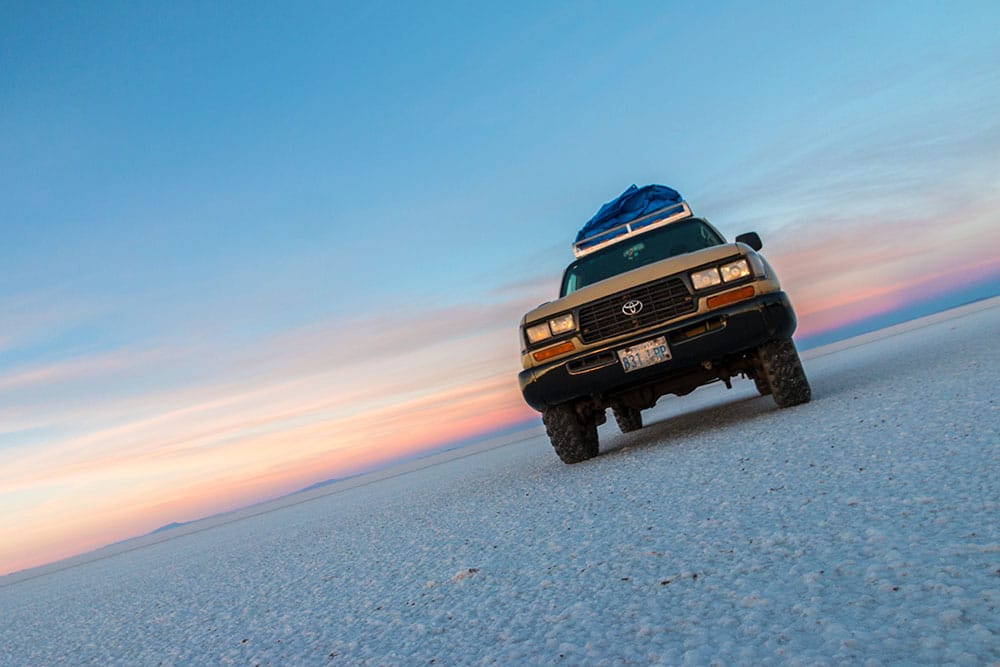


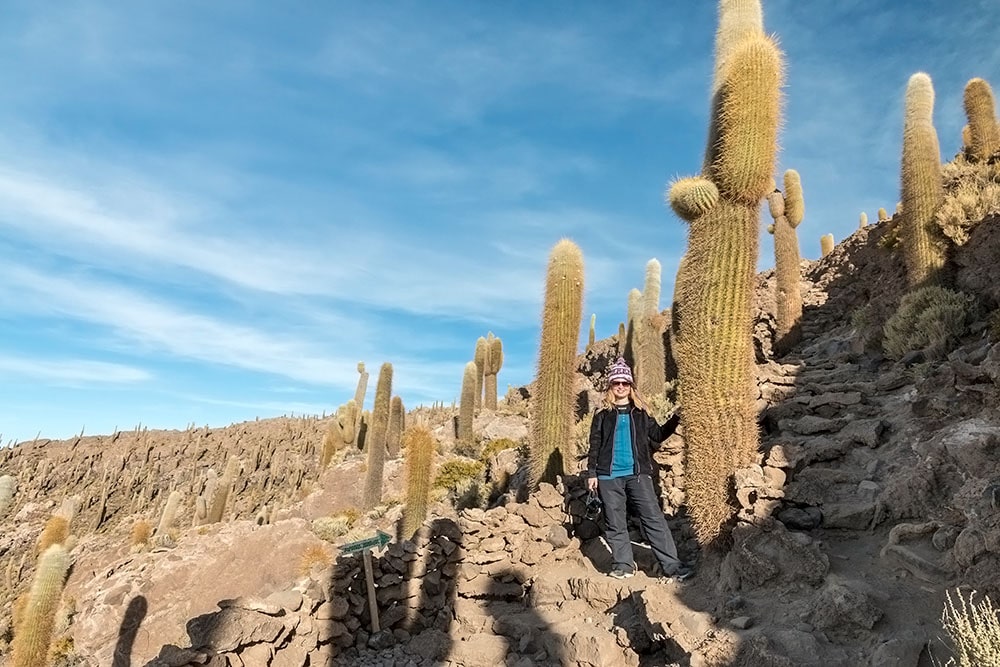
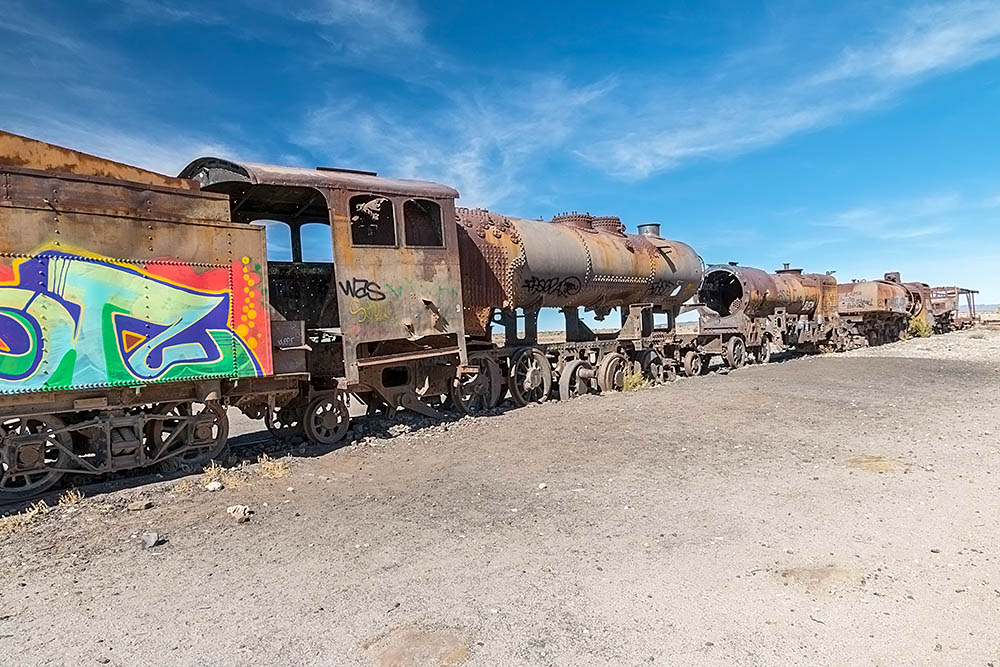

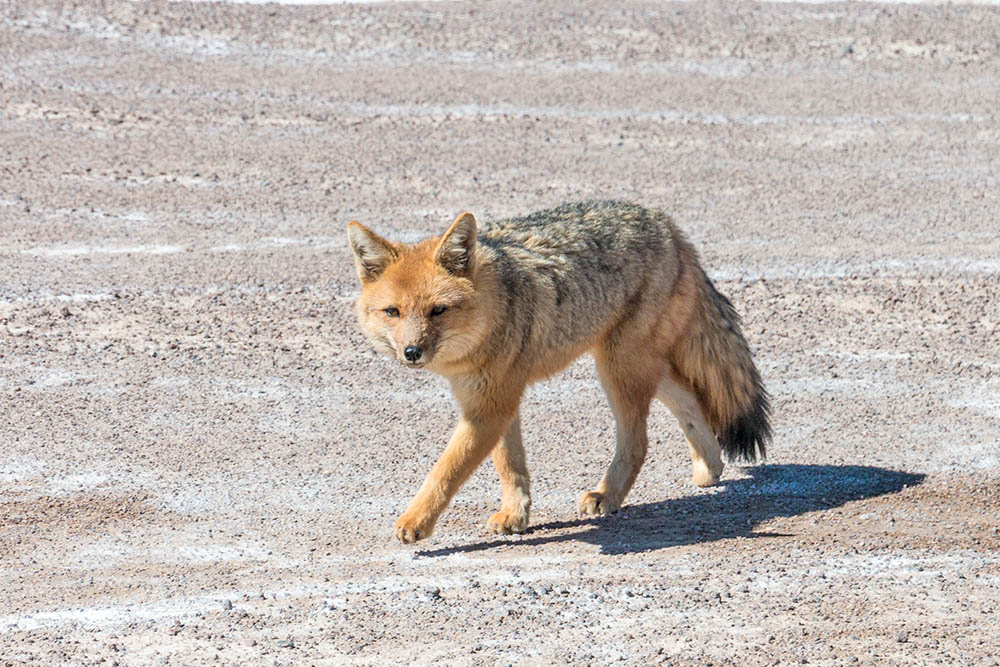

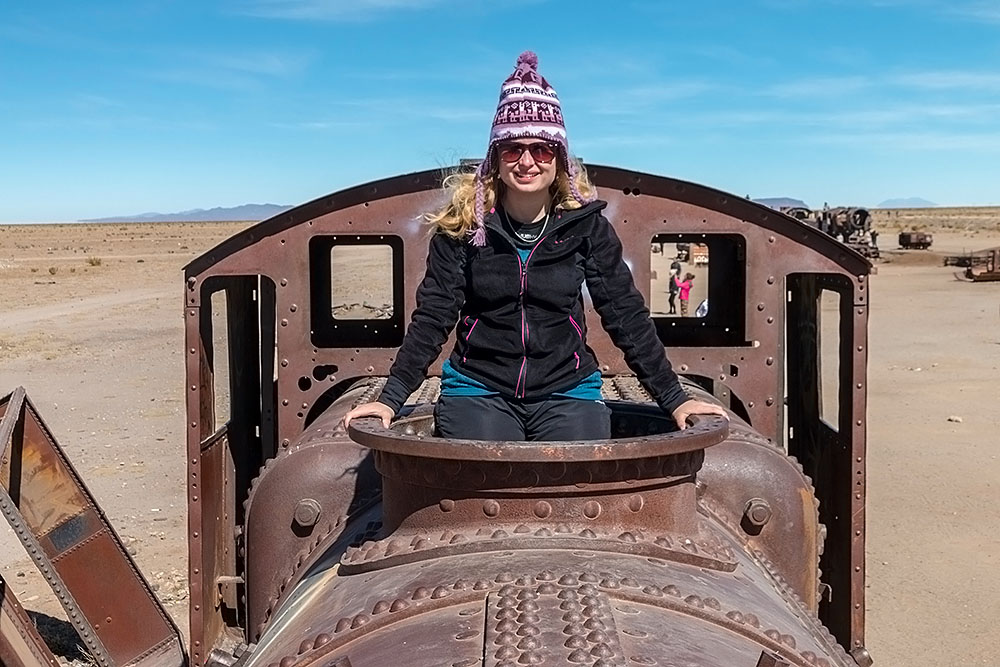
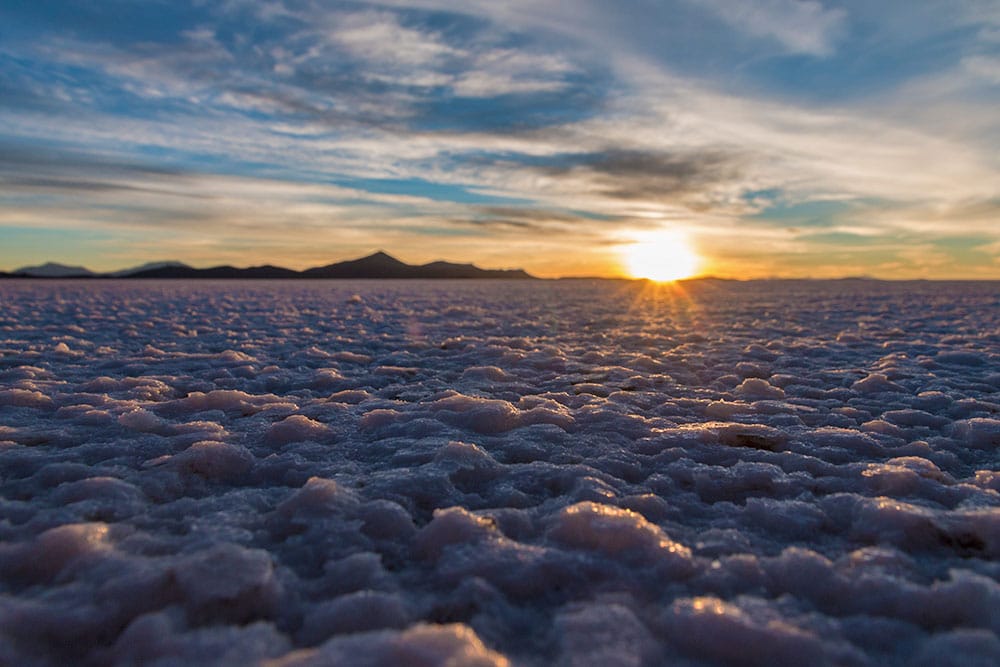
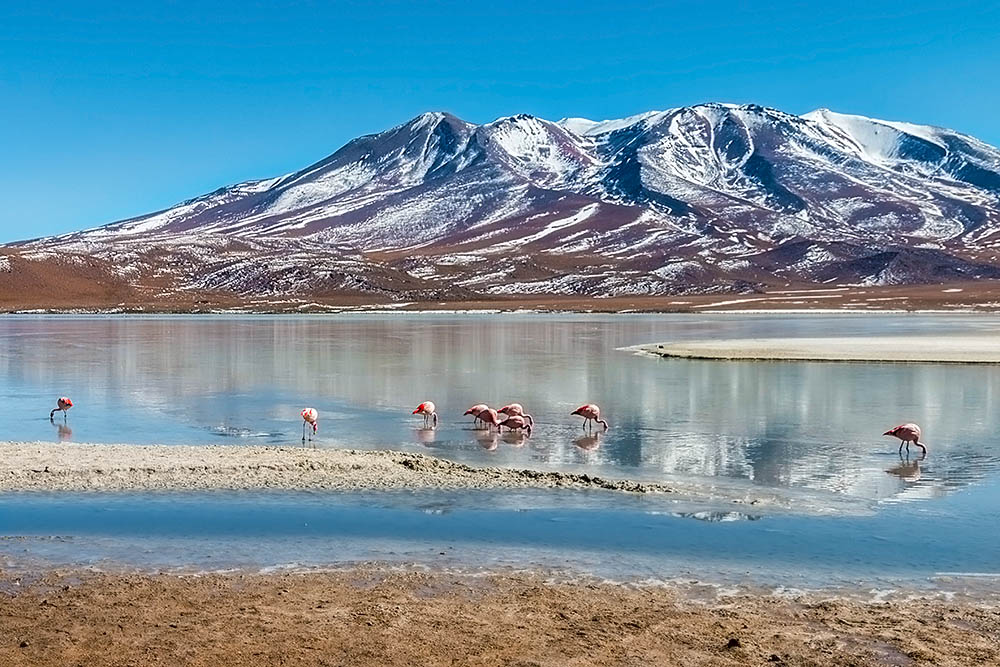
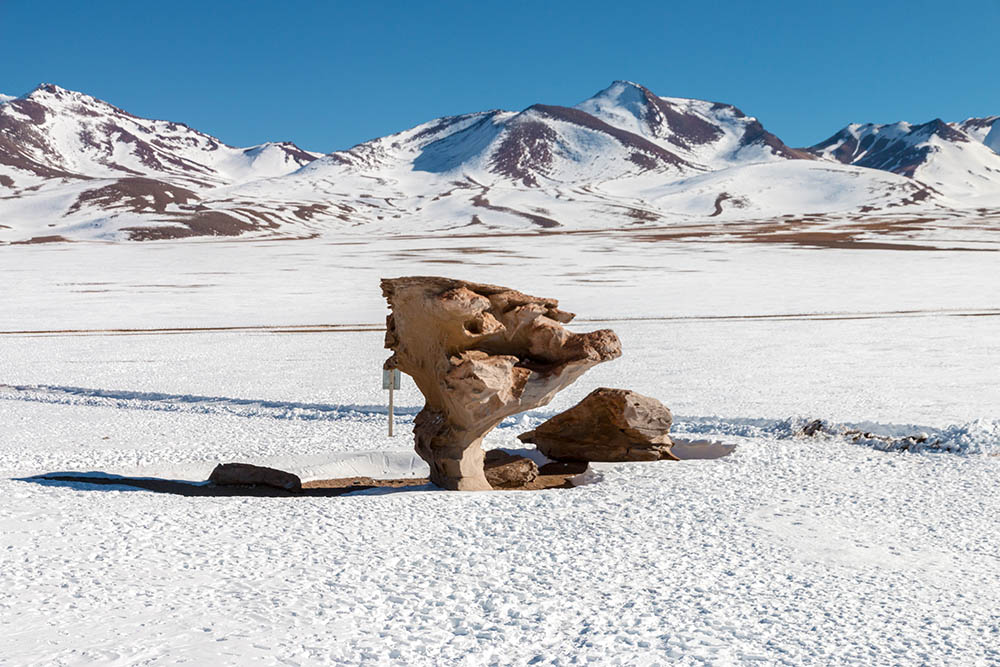
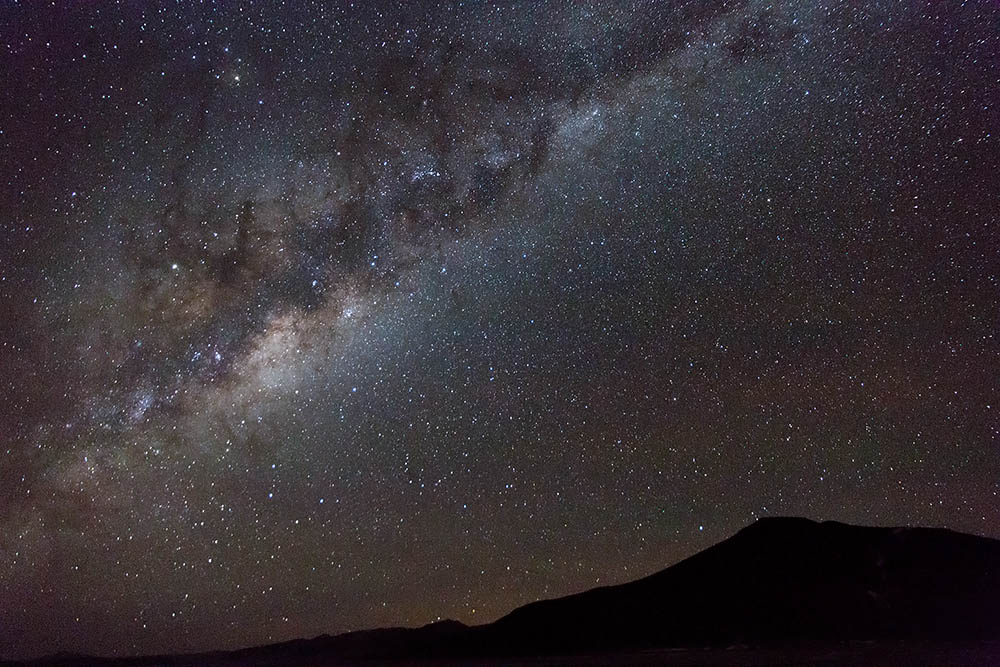



I really admire the shots. it looks cold but warm at the same time 🙂
Yeah, you are right. Sometimes it was very cold and other times pretty warm.
Well, I was fuc*ing cold all the time 😀
Awesome place! The images are magnificent, Bolivia Uyuni Salt Flats is definitely on my bucket list. Thanks for sharing such wonderful destination 🙂
Hi Ratheesh, thanks for your comment, it is definitely worth it to visit this place 🙂
This looks like a great place to visit! I’ve never been to Bolivia, but will definitely give this place a try!
Hi Clem, thank you for comment 🙂 We can highly recommend to visit this place, it is really unusual and amazing.
Your pictures are amazing! I had no idea it used to be the bottom of the ocean, that is really fascinating. Next time I go to South America I really want to see this for myself. Thanks for sharing on #TheWeeklyPostcard.
Hi Anisa, yeahh the whole Uyuni is very fascinating, we can say it is very special place 🙂 Everyone who visit Bolivia should go there.
It must be amazing to stand on those salt flats. I definitely want to go someday. I love your pictures #TheWeeklyPostcard
Hi, thank you for your comment 🙂 It was really amazing, the feeling there is just white nothing around us.
I had never heard of these until my niece visited while she was studying abroad in Chile. And I didn’t know that you could take a tour to them. They look amazing!
Hi Jill, yeahh I think it is great to know it is easy to get there ! There are so many places in the world which are amazing and we don´t know they are exist 🙂
I’ve wanted to visit the salt flats, but your photos sealed the deal. They are absolutely stunning. The three day trip sounds like it was incredible, if not entirely comfortable.
It was one of the best tours we have done on our journeys. If you can do it, don’t hesitate…
Gorgeous photos, Tom! What an incredibly beautiful place to visit. It reminds me a lot about the Bonneville Salt Flats, in Utah. Very similar landscape. The Desert of Siloli looks astounding too. Hopefully someday I’ll get to Bolivia too. #TheWeeklyPostcard
Hi Anda, yeah…we have never been in Salt Flats in Utah but sounds like a good tip for our next travel 🙂 I think all salt flats are the same landscape 🙂
I loved my time in the Uyuni Salt Flats, such an amazing place to tour.
FYI your photos aren’t loading for me. #TheWeeklyPostcard
Yes I know, I had some technical issue and the automatic backup recovery didn’t go well. Now the blog working properly with all pictures…
Awesome pictures! Now Bolivia is a little bit high in our bucket list. Thanks for sharing in #TheWeeklyPostcard.
Bolivia is still kind of hidden in the shadow of Peru. It is very beautiful country but it is less touristy 😉
What great photos – and a great tour! That sunset photo – wow. Just spectacular. Salar de Uyuni is definitely a bucket list item for us – we have a bit of travel envy reading your post. Do you know if they offer tours after the rains, also? Seems like it would be cool to see both sides of that desert world. Thanks so much for sharing on #TheWeeklyPostcard. 🙂
Thank you! Definitely, you can visit Salar de Uyuni also during the rainy season, I would love to see it too 😉 You can check just published new post – 20 Amazing Ideas for Salar de Uyuni Photos